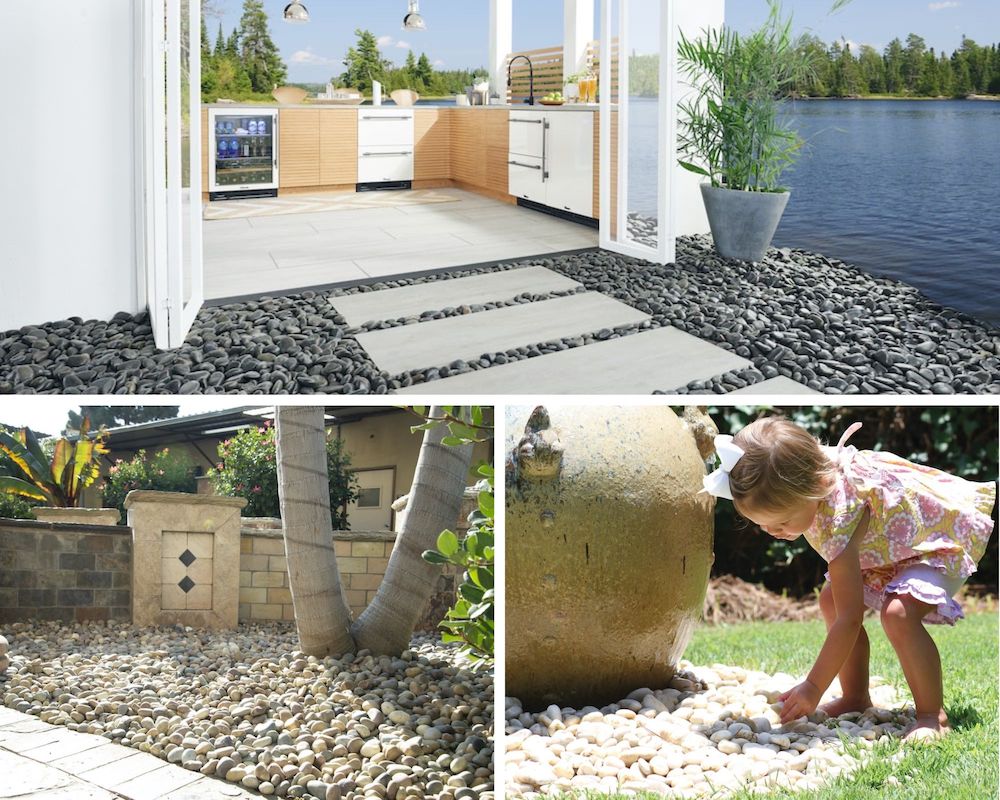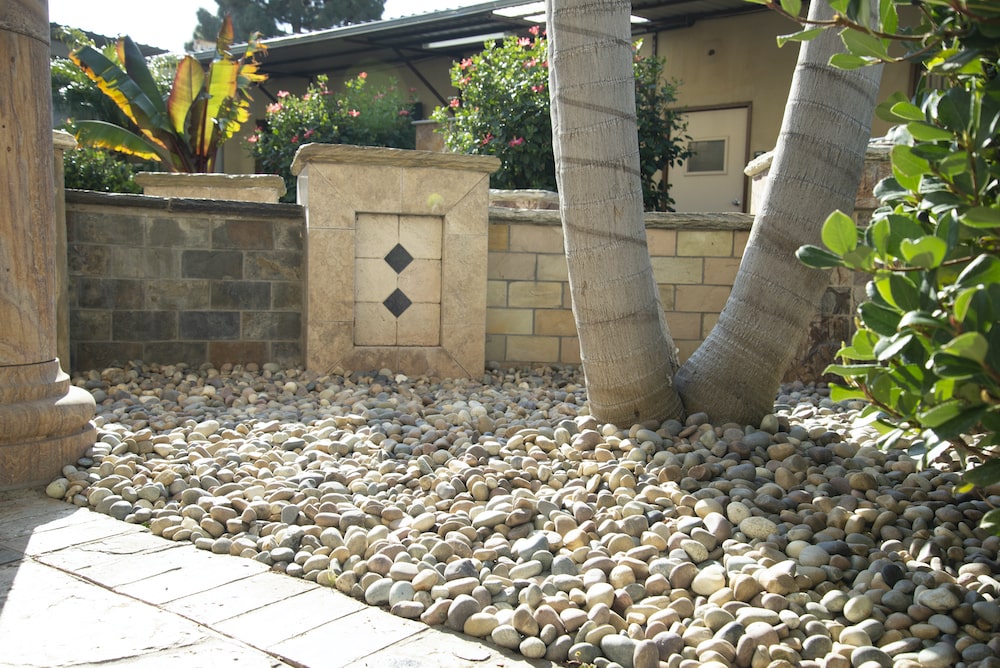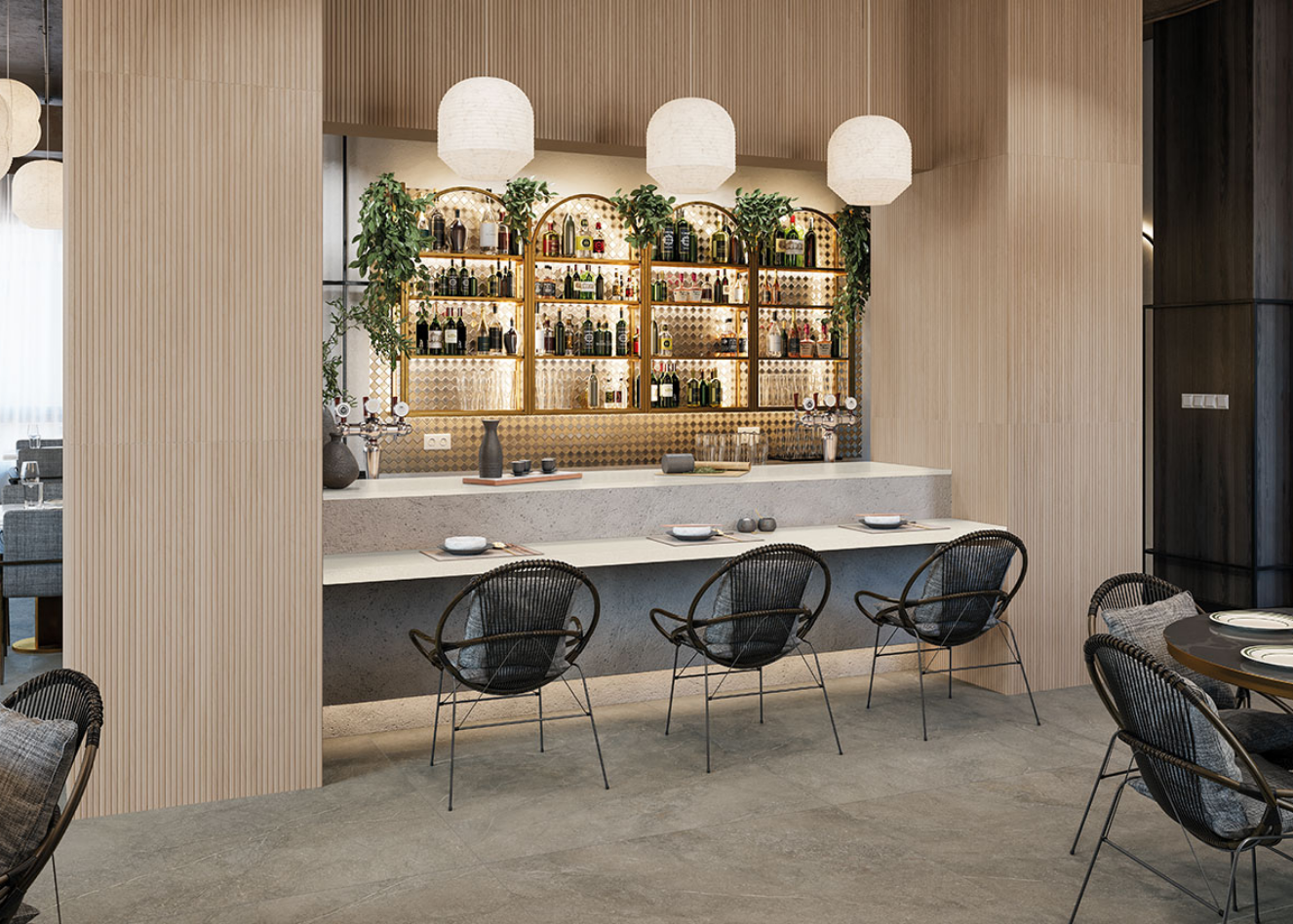What Size Garden Rock Is Best For Which Type Of Landscaping?
May 17, 2021
Building a beautiful outdoor space, whether it’s the perfect curb appeal or a spectacular backyard retreat, comes down to the tiniest of details, including choosing the right size garden rock. Too large of stones will overwhelm its surroundings, while too small of rocks will be drowned out by the rest of the design elements. Plus, using decorative landscape stones are excellent drought-tolerant alternatives to grass or lower-maintenance options than mulch. Adding rock beds to your outdoors will not only keep the weeds away but also look fabulous for years to come. With various shapes, sizes, colors, and textures available, you can easily add interest to your outdoors with just about any landscape rock. Let’s take a look at the main rock options to help you choose the best ones for your next project.
Pea Gravel
One of the most affordable and popular garden rocks is pea gravel. These small, round rocks are often referred to as beach pebbles, and they typically come in multiple colors and feature smooth edges. That’s because the small fragmented stones come from rivers that have naturally polished up the surfaces over time.
Pea gravel is perfect for paths, walkways, large focal points, and small accents, such as framing outdoor patio tile. Because of its tiny size, you’ll need to add solid edging so that the pebbles won’t spread. Otherwise, you’d be spending your weekends sweeping the gravel from the lawn, concrete, or driveway back into its rightful place instead of enjoying your outdoor space. And, in case you want to change your garden layout in the future, remember that pea gravel can be challenging to remove because of its small size.
The natural color variations are easy on the eyes, while the smooth edges are easy on bare feet. The neutral hues will beautifully accent your greenery, but keep in mind that they can hold heat, which may damage some plants. They can also be used to highlight a fountain. The rounded stones are comfortable to walk on when added near a pool, path, or even a playground.
River Rocks
Like a bigger brother to the smaller-sized pea gravel, river rock is another common type of rock used in landscape design. Ranging in size from 3/4 of an inch to 2 inches, river rocks are generally smooth and come in white, black, brown, mixed colors, or a marble-like look. In fact, the versatile colorings make them one of the most popular garden rocks used by landscapers.
The medium size is ideal for lining garden pathways and mulching flowerbeds. River rocks are also used for accenting plants, borders, fences, walls, water fountains, and large boulders. The color chosen can also complement the colors of your garden or house. Plus, the heavier rock isn’t likely to scatter about like the pea gravel, either, so it’s easier to maintain. But, note that while river rocks do help keep weeds away, their medium size will make weeding more difficult.
It’s best to use a wheelbarrow when working with river rock because of its weight. And if you don’t have a truck or other vehicle that can easily handle large, heavy equipment, then check if your supplier can deliver directly to you. Even though they are smooth stones, the size means they won’t be as comfortable underfoot as pea gravel.
Chipped Rock
Similar to river rock, chipped rock comes from larger stones that are chipped down to the medium size, and they don’t have a polished finish with smooth edges. Instead, these chipped pieces offer more texture than your typical garden rock. While they do come in different colors, the most common hue is white, which is a beautiful background setting for colorful flowers and vibrant greenery. It also adds a brighter pop to tanned pavers or desert landscapes.
These rocks are excellent for beds in a front porch, near the house, or in a pool area. They can also be used in potted gardens, too. Because of their sharp edges, it’s key to keep edging around them in order to keep them in their place.
Lava Rock
Just like it sounds, lava rock is made from, you guessed it, volcanoes! These smaller pieces that have been broken down don’t come with smooth edges. The bold red color makes for great accents and is commonly seen in desert landscapes across the Southwestern U.S.
They’re typically utilized as larger ground cover instead of replacing mulch around shrubs and trees. They serve as a lot of bases for yards, especially in areas where it’s difficult and costly to grow grass year-round.
Boulders
Used thoughtfully, and you’ll see why, boulders are large rocks that are incredibly heavy. The semi-permanent pieces come in a wide range of sizes, shapes, and colors, so you’ll want to place this anchor in the right spot the very first time.
These sturdy stones can be featured as carefully curated accent pieces or full-on centerpieces where other types or garden rocks, softscaping, or hardscaping complete the design vision. They’re also commonly used in building retainer walls, outcroppings, and bench rocks, too. Another use is to replace a big tree or shrub with a boulder instead, as it’s a more water-friendly option for drought-stricken areas.
Because of its large size, it can be difficult to maintain a lawn, so choose your placement wisely, but the boulder itself is extremely easy and simple to maintain. While you won’t be walking on these behemoths, boulders can also serve as a simple place to sit depending on the shape of the rock.
Which Garden Rock Will You Choose?
From smooth pebbles to large boulders, these various sizes and shapes will suite your landscaping needs no matter if you stick with one classic or select a creative mix. At first glance you may be overwhelmed as to which type of landscape rock to choose, but these really are some of the most common and popular options, and for good reason. Any of these garden rocks can be integrated into your outdoor design even if you have a tiny space or are blessed with a grand garden.
While natural stone may be more costly than mulch, the return on investment will be higher, not to mention the beauty added to your outdoor space. Now that you know which rock sizing and application type pairs best, you can choose your landscape rock with confidence! Contact us today to discuss your options. We're available to chat online, visit an MSI showroom, or contact an MSI authorized retailer today.
 Rainbow Beach
Rainbow Beach Black Polished Pebbles
Black Polished Pebbles White Polished Pebbles
White Polished Pebbles